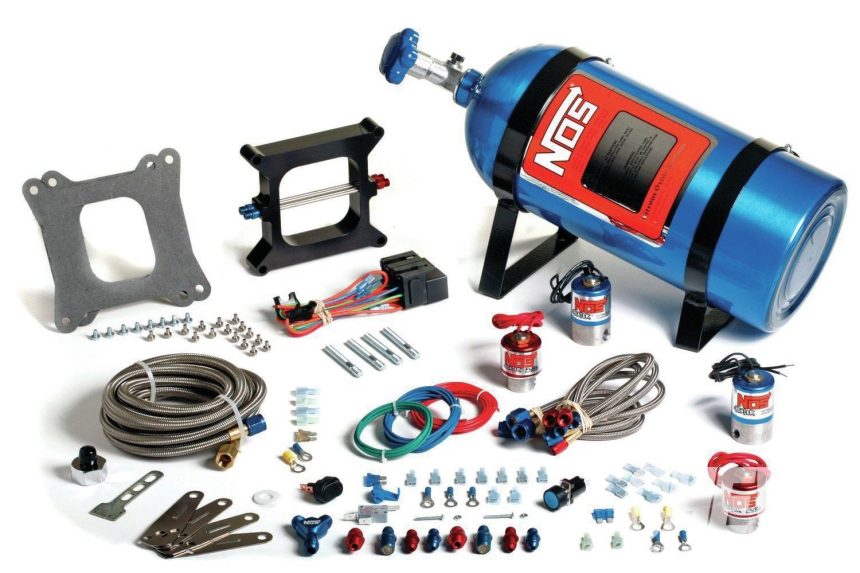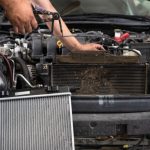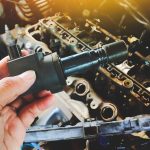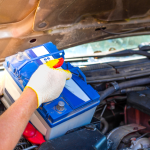In the realm of automotive performance, enthusiasts are constantly seeking innovative ways to amplify their vehicle’s power and speed. Among the myriad of enhancements available, the nitrous oxide system stands out as a fascinating and effective solution. Imagine transforming your car from a modest performer to a roaring beast with the push of a button. Nitrous oxide, often referred to as “NOS,” has captivated both casual drivers and seasoned racers with its promise of instant power boosts. But how exactly does this system work its magic? In this article, we will delve into the science behind nitrous oxide systems, exploring their components, functionality, and the exhilarating potential they hold for car enthusiasts ready to elevate their driving experience. Whether you’re a curious novice or a seasoned gearhead, join us as we unravel the mysteries of this high-octane performance enhancer.
Understanding the Basics of Nitrous Oxide Systems in Automotive Performance
Nitrous oxide systems have earned a reputation as one of the most effective ways to enhance engine performance. The core principle behind these systems is the ability of nitrous oxide (N2O) to provide additional oxygen to the combustion process. When injected into the engine, nitrous oxide decomposes at high temperatures, releasing oxygen that pairs with fuel to create a denser air-fuel mixture. This mixture allows for more substantial combustion, leading to increased horsepower and torque. Furthermore, the cooling effect of nitrous oxide as it enters the engine helps to reduce intake temperatures, which can subsequently prevent detonation and allow for more aggressive tuning.
There are two primary types of nitrous systems: wet and dry. A wet system combines the nitrous with fuel before it enters the intake manifold, ensuring the engine receives a precisely measured mixture that enhances the efficiency of combustion. Conversely, a dry system injects the nitrous oxide alone, relying on the existing fuel system to meter the appropriate amount of fuel to maintain the ideal air-fuel ratio. Both systems can be activated via a variety of methods, including a simple switch or a more sophisticated throttle position sensor. Understanding how these systems work, along with their installation requirements and safety protocols, is crucial for any enthusiast looking to safely boost the power of their vehicle.
Components and Configuration: Building an Effective Nitrous Setup
To build a potent nitrous oxide setup, the choice of components is paramount. At the heart of any nitrous system is the nitrous bottle, which should be properly sized according to your engine’s needs—ranging from 10 to 15 pounds for street applications. A quality bottle bracket is essential for securely mounting the nitrous tank and reducing the risk of damage. The nitrous solenoid, a critical element that controls the flow of nitrous into the intake, must be selected for its flow rate and reliability. Additionally, ensuring the use of high-grade fuel lines and fittings minimizes the chances of leaks and maintains optimal performance. A well-designed intake system that includes nitrous plates or nozzles specifically engineered for your engine type will enhance the mixing of nitrous with fuel, promoting a more complete combustion and maximizing power gains.
Proper configuration of your nitrous system can significantly affect performance and safety. Start by calibrating the fuel solenoid to match the nitrous output; this ensures that the additional nitrous is met with an adequate supply of fuel, preventing a lean condition that could damage the engine. It’s also wise to implement a nitrous management system, which might integrate a wideband O2 sensor to monitor air-fuel ratios in real time. Such systems often feature safety measures like a rev limiter, which cuts off nitrous activation at higher RPMs, protecting the engine from potential damage. Once everything is set up, performing tests at varying nitrous levels will allow for fine-tuning, helping to achieve the perfect balance of power and reliability. Embracing these components and configurations will lead to an effective nitrous oxide setup that enhances your vehicle’s performance while ensuring safety throughout the process.
Safety Considerations and Best Practices for Using Nitrous Oxide Systems
When integrating nitrous oxide systems into your vehicle, prioritizing safety is paramount. Understanding the chemical properties of nitrous oxide is crucial, as it can enhance combustion but also poses risks if not handled properly. Always ensure your system is installed by professionals and maintain strict adherence to guidelines specified by the manufacturer. Regular inspections are vital to identify any leaks or wear and tear, particularly in hoses and connections that are critical in maintaining system integrity. Keep in mind that excess nitrous can lead to harmful engine conditions, so tuning the setup correctly to match your engine’s capabilities will not only enhance performance but also minimize potential damage.
Equally important is the consideration of proper usage during high-performance driving. Sudden activation of the nitrous system can result in immense power spikes that may overwhelm the vehicle’s drivetrain. Gradual application during acceleration allows for a smoother power delivery and reduces the risk of losing control. Additionally, wearing protective gear—such as helmet and gloves—during test drives or race conditions is advisable to mitigate injury risks in the event of a malfunction. Furthermore, understanding local regulations regarding the use of nitrous oxide on public roads is essential, as misuse can lead to legal consequences in addition to safety hazards.
Read More: What Is DEF and How Does It Work? The Essential Guide for Diesel Drivers
Maximizing Performance Gains: Tuning and Adjusting Your Nitrous System
Unlocking the full potential of your nitrous system begins with meticulous tuning and fine adjustments tailored to your vehicle’s unique dynamics. It’s essential to start with the right jetting, as selecting the appropriate size for both fuel and nitrous jets dramatically affects the air-fuel ratio and overall performance. Experimentation is key—be prepared to swap jets and test configurations to strike that perfect balance between power and reliability. Additionally, consider adjusting the timing curve to accommodate the increased power and boost brought on by the nitrous. Timing too aggressive can lead to detonation, while conservative settings might leave power on the table.
Moreover, the nitrous system must be integrated seamlessly with the vehicle’s overall performance parameters. Monitoring vital metrics such as air intake temperature, fuel pressure, and exhaust gas temperatures using gauges or data loggers can provide critical insights during your performance tuning sessions. You may also want to explore advanced features like progressive nitrous controllers, which allow for a gradual ramp-up of power delivery—reducing the risk of traction loss and increasing control over your vehicle’s response. This thoughtful approach ensures that the nitrous system not only enhances performance but reinforces the longevity and reliability of your engine.
The Conclusion
In the fast-paced world of automotive performance, Nitrous Oxide Systems stand out as an exciting game changer. As we’ve explored, this remarkable system offers a thrilling boost to engine power, allowing car enthusiasts to achieve extraordinary speeds and improved acceleration. While the science behind it may seem complex, understanding its components and functionality reveals the ingenuity that drives modern automotive innovations.
As you consider integrating a nitrous oxide system into your own vehicle, keep in mind the importance of careful installation, regular maintenance, and a thorough understanding of its impact on your engine’s overall health. With proper precautions and respect for the power at your fingertips, you can enjoy the exhilarating benefits of N2O while ensuring the longevity of your ride.
Ultimately, whether you’re a seasoned racer or a curious hobbyist, nitrous oxide systems represent more than just a pathway to immense horsepower—they embody the spirit of exploration and the relentless pursuit of performance. So, buckle up, stay informed, and remember that, with great power comes great responsibility. Happy driving!











